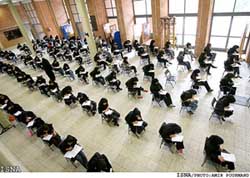What Does the Education System Look Like in Iran?

What Does the Education System Look Like in Iran?
- 1541
- 0 Comment
If you’ve ever wondered what the education system in Iran looks like, you’re not alone. This Islamic theocracy is closed to the western world and the education system is notoriously difficult to attain. Despite the lack of educational opportunities in Iran, some of the top students get into medical or engineering fields. While this may be great for the students, it also leads to a cram industry that is very profitable for the Iranian government.
It is a theocracy based on Islamist ideology
A theocracy is a state where the authority is derived from a god, in this case Islam. Ancient Egypt, Japan, and the Vatican City were all examples of theocracies. After the Isamic Revolution, Iran and Afghanistan, and even the Vatican City, practiced theocracy. In the modern era, theocracies have become less popular, but they still exist.
The term “theocracy” has roots in the ancient Greek word theos, which means “rule of God.” In the modern context, it refers to a state where political power is exercised by the clergy. The clergy, or religious leaders, have special, divine authority, and are held responsible for the day-to-day affairs of the government. As a result, the political system of the theocracy is often based on Islamic ideology.
It is difficult to obtain
While the educational system in Iran is based on knowledge transfer and little concern for research or service, there are pockets of deprivation. Some immigrants, especially Afghans, lack proper identification and children from poor families are forced to work as street vendors and peddlers. While building more schools is not the answer to the problem, there are ways to persuade those families to send their children to school. One method has been tried in Bangladesh and Mexico: cash payments.
The Iranian grading system is based on a 0-20 scale, and students must obtain an average grade of at least 10 to advance to the next academic grade. Graduates and doctorates require an average grade of 12, while undergraduates must get an average grade of at least 14. It is no wonder that as many as 150,000 talented Iranians leave the country every year to pursue higher education in the U.S. and abroad. The International Monetary Fund (IMF) has called this the world’s largest brain drain.
It is inequitable
Iranian schools segregate students according to gender. Textbooks have often featured discriminatory writings and images against women. Female school-aged students are three times less likely than males to finish primary school. In spite of these inequities, Iran has made tremendous strides in improving the educational opportunities of girls and women. In 2017, 99 percent of Iranian school-aged girls completed primary school. In 2019, girls received 10.4 years of education.
Iranian universities are notoriously sexist, with girls and boys studying in different faculties. The curriculum at Sharif University is based on science and technology, with almost no emphasis on the arts. In addition, Iranian students may be able to excel in business majors, but these courses are geared towards male-dominated fields, thereby leaving women and girls without the education they need to succeed.
It is closed to the western world
The education system in Iran is largely closed to the western world. Iranians often express sarcasm and mockery on social media to point out the lack of access to higher education. Iranian universities often discriminate against women, with students excluded from 77 majors. Many believe that this discrimination is a result of the religious leader’s personal piety. This stance is rooted in sexism and a lack of freedom.
The Islamic Republic of Iran has a highly structured education system. Higher education institutes were upgraded into universities in the 1980s. Students are required to pass a 4.5-hour multiple-choice examination focusing on Persian language, Persian literature, mathematics, history, and foreign languages. Top students usually go into medical and engineering fields. The competitive nature of the exam has fueled the cram industry in Iran, and authorities are working on a way to replace the Konkur examination with something more relevant to the country’s economy.

